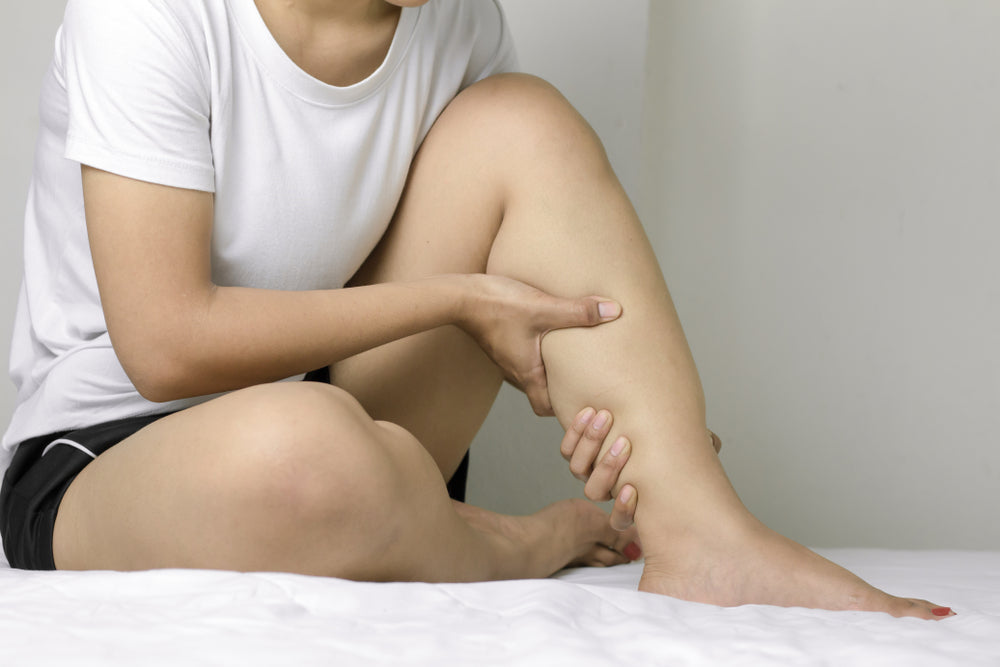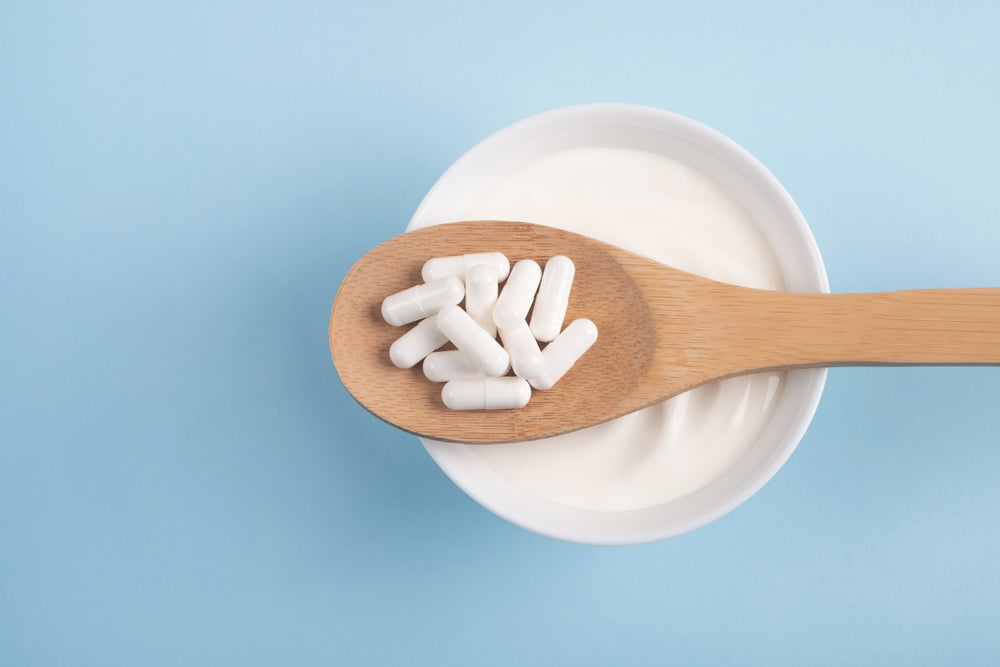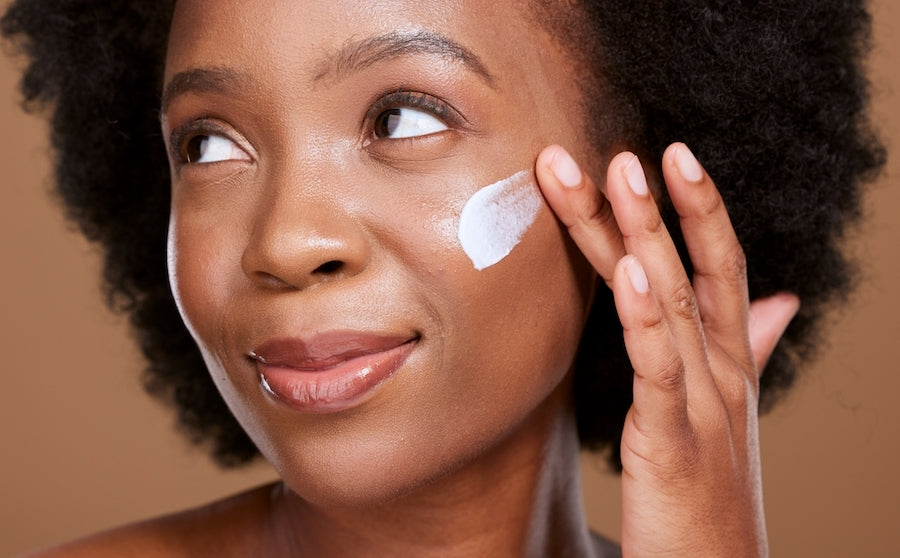
How Rubbing Calf Muscles Helps Recovery? Tips & How to do it
From running pains to weightlifting or just wearing the wrong shoes, there are many ways to end up with tight calf muscles. There can be several different issues at play when it comes to sore, painful calves, but luckily, there are easy techniques that can make an instant difference. The quickest and easiest source of relief? A well-executed calf massage!
Why does rubbing sore muscles help alleviate pain? The short answer is that it improves blood circulation and flexibility while potentially reducing inflammation. However, the extent of relief you experience from massaging your muscles depends on your technique and the accompanying products you use.
Here, we’ll explain more about how to optimally massage your calves to relieve tension, topical pain serums that can boost the results, and additional tips to keep pain at bay.
Why Rubbing Calf Muscles Helps With Recovery
Improved circulation - Increasing blood flow is the number one priority for tense calf muscles, and massage is key in aiding quick recovery. Muscle massage is shown to restore range of motion, which can assist anyone suffering from sore muscles. It also decreases stress hormone levels, thus positively impacting overall body relaxation.
Reduced lactic acid and inflammation - Rubbing your calves using the proper method can help loosen the accumulation of lactic acid, a main contributor to muscle soreness. If you are experiencing muscle aches and tightness in your calves, you likely also have inflammation or muscle knots. Massaging trigger points or knots can release tension in the surrounding calf muscle, providing tension reduction and relief.
Reduced likelihood of minor injuries - Runners are well aware of how painful sore calves can be and how they can affect recovery and performance. Any athlete with tight muscles can benefit from massage, as it improves flexibility, breaks down tissue adhesions, and lowers the risk of injury.
How to Massage Calf Muscles–Step-by-Step
1. Get prepared and comfortable
To effectively massage your calves, you want to start in a comfortable seated position, allowing your legs to relax while giving you easy access to the sore muscles. If you are using a cryo massage roller or massage cream, prepare everything ahead of time for easy access.
2. Start with slow, circling motions
Begin by making circles around the entire calf, using gentle but firm pressure without applying too much weight to any one area. A cryo massage roller is perfect for stimulating blood flow and offering relief from start to finish in this massage process.
3. Increase pressure and direction
Holding your massage roller or using your hand, roll down the length of your calf muscle from top to bottom and back up again while using a little more pressure than the previous step. Try to target the sore muscle areas for 30 seconds before moving on to another area.
4. Concentrate on areas of tension
If there are specific areas of tension or knots within your calf muscles, localize the pressure and movement on top of those areas for about 20 seconds in a circular motion. Using firm pressure (but never enough to cause pain), use your cryo roller or thumbs to massage the knotted area until you feel some tension relief.
5. Finish up your calf massage
Once you have worked away the tension in your calves, you have officially learned how to properly massage your legs, all in the comfort of your home. Finishing up with some light touch circles can help relax the calves and surrounding muscles, and then it’s time to rest and relax.
Products Which Can Help With Calf Massage Massages

Cryo Massage Rollers provide the best of both worlds—cold therapy combined with the relaxation and relief of massage for your calves. With an easy-to-use ergonomic handle, cryo rollers allow you to easily massage your calves, alleviating soreness and inflammation and specifically targeting hard-to-reach knots.
The Super Soothing Pain Serum is another well-suited topical pain reliever to enhance your calf massages. This plant-based natural cream contains 500mg full-spectrum CBD combined with powerful ingredients like lidocaine and menthol. You’ll receive fast-acting relief along with anti-inflammatory properties to help minimize long-term soreness. Best of all, it can be bought alongside the Cryo Massage Roller in our popular Pain Relief Kit.
Our Ultra-Relief Muscle Pain Rub features 1,500mg of full-spectrum CBD, lidocaine,
menthol, and arnica, providing exceptional relief for sore calf muscles. It’s balm-like consistency makes it ideal for a penetrating massage.
Our Hot Massage Firming and Toning Cream offers the ultimate relief and relaxation, with all-natural ingredients like aloe vera, capsicum, CBD, witch hazel, and more. Not only will you experience a pleasant warmness during your muscle-alleviating massage, but you can tighten, smooth, and firm skin.
Additional Tips for Relieving or Preventing Calf Muscle Tightness
Regularly stretch
Warming up before walking or exercising by stretching or massage can help loosen muscles and prevent future soreness. The same can be said for stretching after workouts or activities, reducing discomfort and recovery time.
Check whether footwear provides the best support
The type of shoes you wear, whether for athletics or everyday activities, can contribute to calf tightness and pain. Heels and platform shoes can shift your body weight, forcing your calf muscles to work harder.
When it comes to running, which is an activity that commonly causes calf issues, a flatter shoe will result in more pressure put on the toes, increasing the load on the calf muscles. Switching from regular training shoes to flatter running shoes can cause your calves to become overworked and sore, so keep this in mind when choosing your shoes.
Elevation
Propping your legs up and keeping them elevated for at least 15 to 20 minutes daily is a great habit to help avoid calf pain. This process reduces swelling and improves circulation, allowing blood and fluids to drain from your legs.
Stay Hydrated
Drinking enough water can be a make-or-break factor in keeping muscle soreness at bay. Dehydration is a common cause of calf muscle cramps because fluids are integral in the process of your muscles contracting and relaxing smoothly. Make sure to hydrate before and after activity to avoid this issue. In addition, a diet that includes sources of calcium, potassium, and magnesium can also help avoid issues with muscle cramps.
Compression
Compression sleeves are inexpensive devices worn like socks that help promote circulation. They can be purchased online, at pharmacies, and athletic stores, offering another way to effectively reduce calf discomfort.
A Final Note About Calf Soreness
Massaging your calves should speed up your recovery and provide some relief. That being said, if you are experiencing intense pain or swelling in your calves that isn't improving, it is recommended that you immediately consult with your doctor.

By Emily Wegener
With a unique background as an Integrative Nutrition Health Coach, Masters Degree in Teaching and experience in Psychology, Emily spends much of her time researching and trying out new holistic healing modalities.


